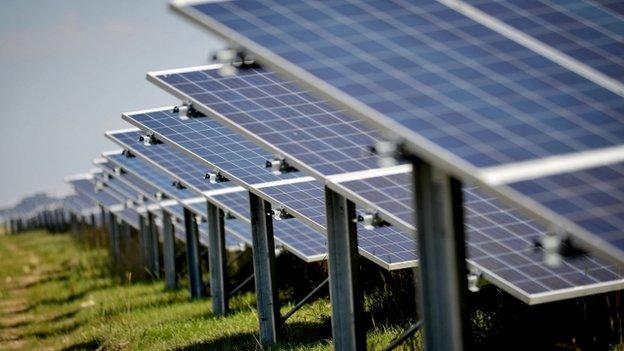The town where one in ten have opted for solar power
- Published
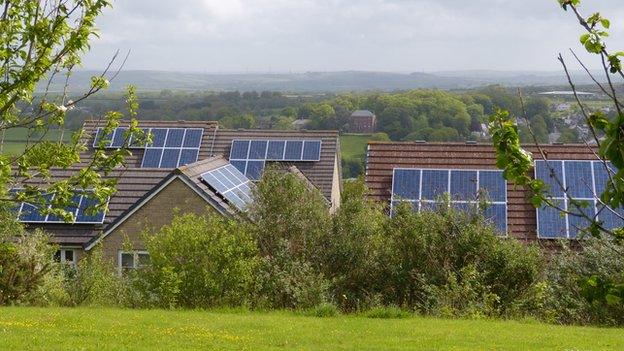
Residents of Wadebridge have been amongst the fastest in the UK to install solar panels
Even before she got behind her desk in Whitehall, Amber Rudd, the new energy secretary, was promising to "unleash a new solar revolution".
A million people now live in homes with solar panels on the roof, and she says that number needs to increase further.
Yet the residents of one small town in Cornwall need no extra persuasion.
Around 500 houses in Wadebridge on the Camel estuary already have panels on their roofs - nearly 10% of homes in the area - making the town a contender for the solar power 'capital' of the UK.
"It is fairly likely from the information we've been able to gather that Wadebridge has the highest concentration of panels in the country," says Jerry Clark, of the town's Renewable Energy Network.
Cornwall, with 1,541 sunshine hours every year, is particularly rich in this resource.
But people living anywhere in the UK can also benefit.
Providing you are prepared to invest at least £5,000 - and wait for a decade to get your money back - the eventual savings could be considerable.
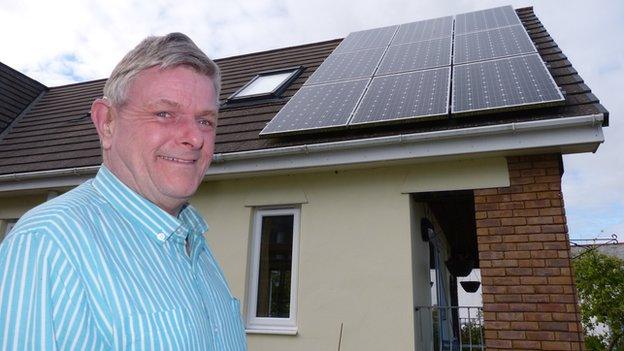
Steve Kessell generates more electricity than he can use
Break-even point
Steve Kessell, who runs a bed and breakfast in Wadebridge, installed solar panels three years ago.
His savings, taking into account the subsidy he gets for generating electricity, and the lower bill from his energy supplier, amount to £1,800 a year.
He expects to break even on his installation costs within six years.
While that figure is typical for Cornwall, anyone living on the same line of latitude as London can expect to break even in 10 years - and farther north on the latitude of Stirling in Scotland in 12 years.
"I'm quite delighted I've got the panels," he says. "And quite often I wonder whether this business would have been profitable, or as profitable, without them."
Since there is, as yet, no way of storing the power he generates, Steve tries to use as much energy as he can during the day. You can save more by cooking, washing and ironing during daylight hours. But the system still works when it's cloudy.
"At times, it will even generate when there's a full moon - even though it's just a trickle," he says.

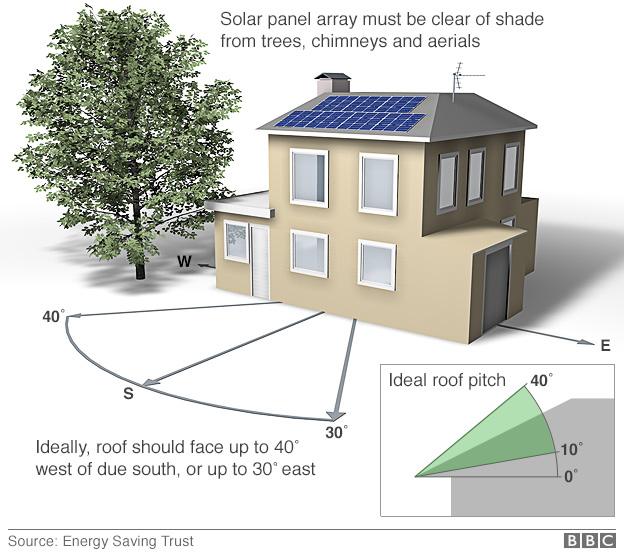
'Sea breeze'
Solar panels don't usually need planning permission, unless you live in a conservation area.
But there are some key practical considerations.
Your roof shouldn't have any shading, either from trees, nearby buildings or chimneys.
The angle of the roof should be between 10 and 40 degrees from horizontal, and it should face south or south-west. Up to 40 degrees west of south, or 30 degrees east of south, is ideal.
"They also work better when they're not so hot," advises Merlin Hyman, the chief executive of Regen SW, which supports renewable energy in the West country.
"So a sea breeze is good."
You will get a higher subsidy if your home is already energy efficient - rating at least a Band D on its Energy Proficiency Certificate (EPC).
Tariffs
At the moment, solar power only makes economic sense thanks to public subsidies - which we pay through the green levy on our electricity bills.
Houses produce 55% of the UK's CO2 emissions, so the subsidy is designed to help meet climate change targets.
It means the government pays you to produce renewable energy, whether you actually use it or not.
This is the so-called Feed in Tariff (FiT).
The first element is the generation FiT - the amount you are paid for the electricity you generate.
The rate of this is gradually reducing, and will next go down on 1 July. You will then be paid at this rate - plus inflation - for 20 years.

Solar calculator

Click here, external to view the possible savings on your own home. Source: Energy Saving Trust

Costs and savings
In compensation for falling FiT rates, the cost of installing solar panels is going down too.
Three years ago Steve Kessell paid £10,000. Now the same system can be installed for between £5,000-8,000.
The second element of the FiT is the export rate. This covers the energy you don't use yourself, but instead return to the grid. But it is lower than the generation element.
Hence it is more economical to use as much of your own energy as you can, rather than exporting it.
"The more you use in your home, the more you're going to make savings," says James Wakelin of the Energy Saving Trust (EST).
"Pensioners, or those who work at home, will save a lot more than those who work out of the house from nine to five."
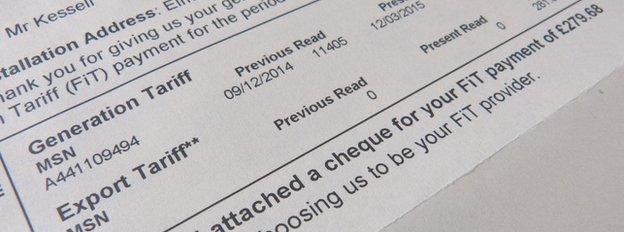
The generation tariff is at a higher rate than the export tariff
Given the time it takes to get your money back, investing in solar energy is still a bold decision.
If you move house in the meantime, the new buyer may or may not appreciate the value of the system you've installed.
However, moves to produce batteries to store home-produced energy could further revolutionise the economics of solar power.
Should they prove effective, the town of Wadebridge would not only be self-sufficient in energy, but it could become a net exporter too.
A British town exporting sunlight? Now you've heard it all.
- Published1 May 2015
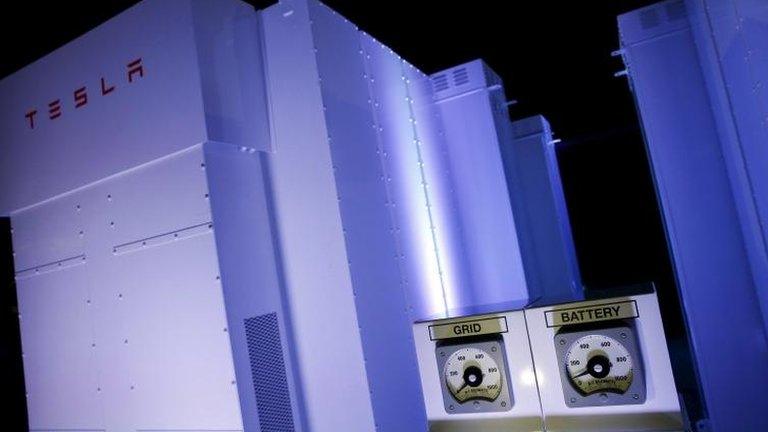
- Published27 April 2015

- Published24 March 2015
